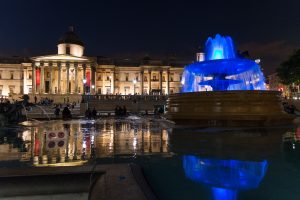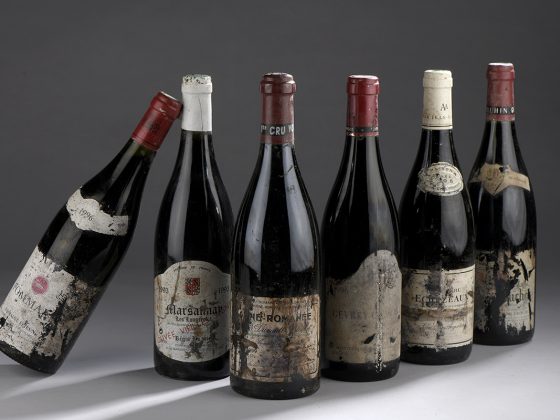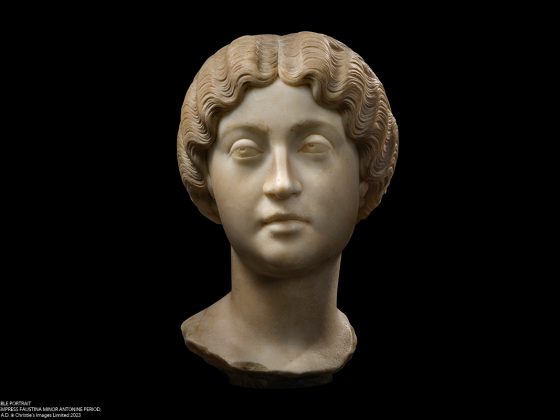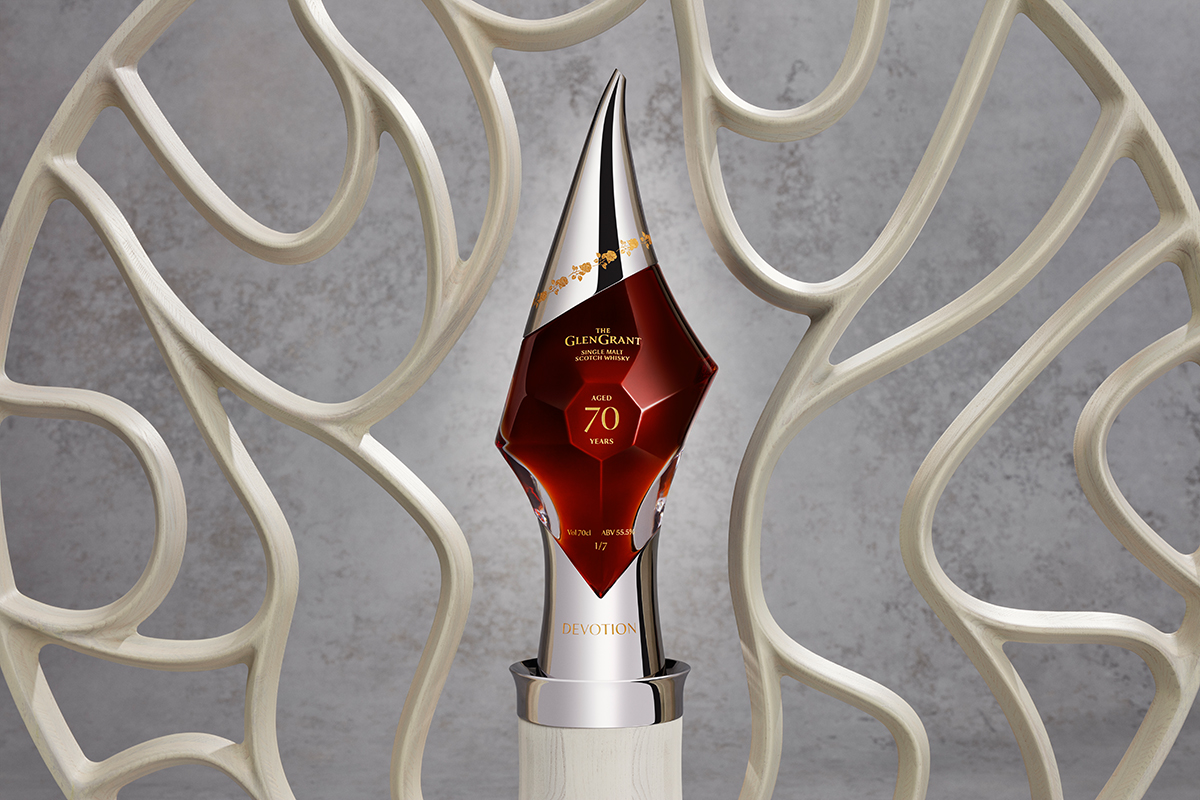The Voyage of a Lifetime
One of the Most Important Offerings of African Art to Come to Auction Led by an Exceptional and Historic Fang Head from Gabo
Alongside Modern & Contemporary Artworks by Francis Bacon, Louise Bourgeois & Salvador Dalí
Volume I in Paris on 21 June 2023 – With Exhibitions in New York, Brussels, London & Paris – Followed by Volume II in New York in Early 2024

©Courtesy: Sotheby´s
PARIS, 2023 – Hélène Leloup (b. 1927) is one of the art world’s true pioneers, bringing together a spirit of adventure, a detailed anthropological approach and deep knowledge to become one of the foremost specialists in African and Oceanic art in Paris, New York and beyond.
Having been awarded the Legion of Honour, the highest French order of merit, Leloup’s ground- breaking contributions to the field cannot be overstated.
Over the years, she facilitated many significant acquisitions of African art to museums worldwide, with pieces in the Louvre Abu Dhabi, Musée du quai Branly Jacques Chirac, Musée Barbier- Mueller, Geneva, The Metropolitan Museum of Art, New York, Fine Arts Museum of San Francisco, Japan’s African Art Museum in Hokuto and Yale University Art Gallery, New Haven. In recent years, Leloup continued her dedication to supporting institutions with recent personal donations, most significantly a major Dogon maternity statue donated to the Musée du quai Branly in 2022 and now exhibited in the Pavillon des Sessions in the Louvre Museum. Together with her husband Philippe, Leloup founded a school in Kori Maoundé in Mali.
Leloup was one of the first collectors to pair African art with Contemporary art, and when opening her gallery in New York, she fully immersed herself in the art scene of the 1960s. She acquired works by some of the greatest masters in modern and contemporary art – Jean- Michel Basquiat, Louise Bourgeois, Salvador Dalí, Max Ernst, Francis Bacon, Pierre Soulages and Gerhard Richter – with a coherent thread connecting these works to her passion for African art
On 21 June, Sotheby’s Paris plays host to Volume I of two dedicated auctions of Leloup’s personal collection – which together form a singular anthology of African and Oceanic works alongside Modern and Contemporary art. The sales will recount her 70-year collecting journey, bringing to the fore both her unique story and eye as well as some of the most important works in private hands. Prior to the auction, the lots were exhibited to the public in New York (6-16 May), Brussels (30 May-2 June), London (31 May-11 June) and Paris (16-20 June). As a testament to Leloup’s significant role in the development of interest in African art in the US, the second volume will be offered at Sotheby’s New York in 2024.

Estimate 150,000 – 250,000 EUR.
©Florian Perlot pour Art Digital Studio / Courtesy: Sotheby´s
THE DIARY OF A VISIONARY & A SCHOLAR
“The only way to find out is to go to where the people are and ask them.”
– Hélène Leloup
Hélène Leloup’s vocation was born from a sense of curiosity and adventure that led to her first trip to Africa in 1952. As a student working for a small press agency, she took advantage of an opportunity to travel to Dakar in Senegal. In deciding to do so, she was partly inspired by her father, an avid sailor who had undertaken a number of trans-Atlantic voyages in his yacht, and who had tragically died when Leloup was aged nine. Her own trip set her on a path to a life dedicated to the arts of Africa. Just four years later, in 1956, Hélène and her first husband Henri Kamer opened their first gallery in Paris – at the time, she was the only female art dealer in this field. Over the years, she met the most renowned antique dealers across the African continent, and carefully acquired works, continuing to travel and to learn as she went.
Her first landmark moment came in July 1957, when Hélène and Henri exhibited over 450 African and Oceanic sculptures for the first time in Cannes, with loans from the personal collections of Pablo Picasso, tastemaker and dealer Charles Ratton, and aristocratic adventurer Baron Lycklama. Later that year, in Guinea, she discovered eight Baga snakes – rare, highly abstract and painterly sculptures from an ancient tradition that had been banned – which had hitherto been unseen in the West. These now reside in the most prestigious private and public collections worldwide.
Leloup’s vision was to bring this art to an international audience, and in 1959 she immersed herself in the incredible energy of 1960s New York – opening a second gallery across the Atlantic, and later a third in Palm Beach in 1967. She and her husband became friends with renowned gallerist Pierre Matisse, privately advised filmmaker John Huston of Moulin Rouge fame and sold a number of works to Nelson Rockefeller (one of which is now the main highlight of the African Wing of the Metropolitan Museum of Art in New York). Her commitment to the visibility of African art in the US continued for decades, and in 1985, she was the lender and scientific advisor for an important exhibition in the field at the Museum of Modern Art in New York, “‘Primitivism’ and 20th Century Art”, alongside MoMA curator William Rubin.
In 1974, Leloup held a seminal exhibition of intriguing wooden Mbembe figures from Nigeria, whichshe had discovered through a Togo-based Malian dealer, shining a spotlight on an unknown body of work from a highly significant chapter of the history of African art. She was able to bring together twelve of these figures and present them to the Parisian art scene, the first time any of these sculptures had been seen in Europe. The show was a sensation, and four decades later, in 2015, the Metropolitan Museum of Art dedicated an exhibition to all 12 of these examples, and two further sculptures, which together represent the corpus of fully intact stand-alone figures from this carving tradition.
Now 96 years old, Leloup closed the doors to her gallery in 2004 but has remained close to the institutions she has worked with, continuing to lend her expertise and advice to exhibitions. Most recently, she curated the seminal Dogon exhibition at the Musée du quai Branly in 2011.
HIGHLIGHTS FROM VOLUME I

©Florian Perlot pour Art Digital Studio / Courtesy: Sotheby´s
Tête de reliquaire, Fang, Gabon (est. in the region of €4 million)
The significance of this Fang head is two-fold: it belongs to the most prized corpus of statuary from the African continent and was once part formerly in one of the most emblematic collections in the history of Western art collecting, the collection of Helena Rubinstein.
Rubinstein (1870-1965) was the head of an eponymous luxury beauty empire, and in her professional life dedicated herself to the exaltation of beauty. A leading art collector and philanthropist, she was committed to the field of African art, and works from her collection adorned her apartment and her beauty salons. This head was one of her first purchases, in 1937 – seen in several photographs of her Parisian apartment from that period – and was presented in the living room until 1962. It was sold in the single-owner auction of her African and Oceanic art collection at Sotheby’s New York in 1966. A masterpiece of its type, the head has been exhibited widely, most recently at the Musée du quai Branly in 2010, 2017 and again in 2019.

©Florian Perlot pour Art Digital Studio / Courtesy: Sotheby´s
Francis Bacon, Head of Woman, 1960 (est. €6-8 million)
The theme of the human figure is one that is explored across Leloup’s collection, with a marriage of common themes in different contexts across continents and generations, and Bacon was an artist for whom the distortion of the human figure was central. This painting holds a unique place in Bacon’s oeuvre, who painted only a handful of female models (given his insistence that he must know his models intimately),and showcases the power of his portraiture – the soul of the subject distilled in a transcendent image made from memory.
Head of Woman was exhibited in the artist’s first solo show at Marlborough Gallery in 1960, a show that also included a remarkable portraits, notably his series of Popes inspired by Velasquez. It was then part of the important retrospective on the artist that travelled to the Kunsthalle in Mannheim, the Galleria d’Arte Moderna in Turin, the Kunsthaus in Zurich and the Stedelijk Museum in Amsterdam, before being acquired by the legendary American socialite and avid art collector Betty Blake. Born into one of Philadelphia’s most prestigious fortunes, Blake was a force who brought modern art to Texas in the early 1950s, first with her own gallery (founding the Dallas Museum of Contemporary Art), and then through a steady and informed presence on the boards of several museums and institutions (serving on the
acquisition committee of the Modern Art Museum of Fort Worth among others). This painting was subsequently shown at the Grand Palais in Paris and the Kunsthalle in Düsseldorf in 1971- 72, and in 1990 travelled across the United States (on view at the Hirshhorn Museum in Washington, LACMA in Los Angeles and MoMA in New York.
The work remained in the same family collection until it was offered at auction in London in June 1996, where it was acquired by Leloup, and is now appearing on public view for the first time since.

©Florian Perlot pour Art Digital Studio / Courtesy: Sotheby´s
An exceptional corpus of Dogon art from Mali
From her first trip to Mali in 1957 to the publication of her seminal reference book, Statuaire Dogon, in 1994, Leloup never ceased to deepen her research and knowledge. Nurtured by numerous stays in the Dogon Country, field studies at the Bandiagara cliffs, and exchanges with archaeologists, scientists and locals, she succeeded a generation of famed researchers from the 1930s to establish herself as one of the greatest specialists of Dogon Art of the second half of the 20th century. Her approach was avant-garde, as she became the first to systematically Carbon-14 test as part of her analysis, in a quest to better understand the chronology this culture. Her work in this field opened the doors to a more accurate scientific and stylistic classification of works, that still serves as a reference for this region today.

©Florian Perlot pour Art Digital Studio / Courtesy: Sotheby´s
Leloup’s private collection includes many examples across a wide range of media from Mali, but it is her lifelong love of Dogon art and culture that sits at the heart of this – encapsulated by her curation of the Dogon exhibition at the Musée du Quai Branly Jacques Chirac in 2011. The pieces offered as part of the auction illustrate both the diversity of forms and materials and the antiquity of this art. Notably, these include, an ancient Djennenké statue (est. €250,000-350,000), a rare Dogon mask (est. €120,000- 180,000), an important double Komakan statue (illustrated above right, est. €200,000- 300,000), and a large Niongom statue (€150,000-250,000) from the Malian merchant Gouro Sow. These evocative pieces resonate for their importance within the culture and their exceptional quality, as well as their unique provenance in having been chosen by and treasured by Leloup as a pioneer in this field.
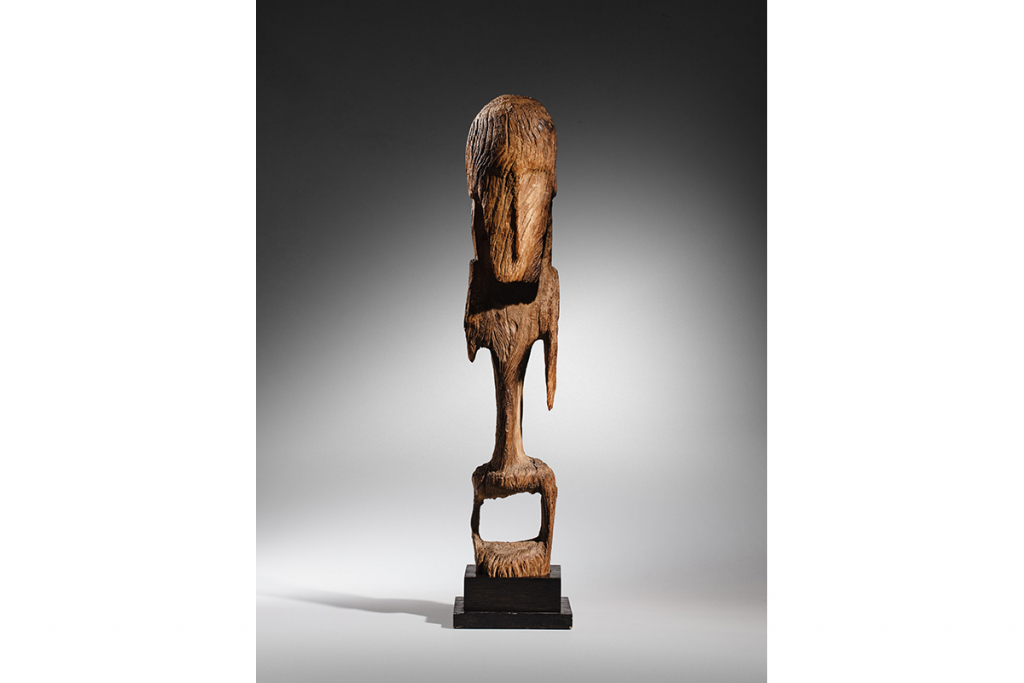
©Florian Perlot pour Art Digital Studio / Courtesy: Sotheby´s
HIGHLIGHTS FROM VOLUME II
The second auction of works from Leloup’s collection will take place in New York in early 2024 and will celebrate the American years of this great dealer.
Among the key pieces of the second volume is a striking Janus Bembe mask (illustrated right), which was one of the emblematic works exhibited as part of the landmark MoMA exhibition in 1985. After closing her New York gallery in 1995, Leloup continued to maintain a strong link and affinity with the United States, as demonstrated by a series of major loans of exhibitions at the Metropolitan Museum of Art – including a reliquary from Gabon (for the “Eternal Ancestors: The Art of the Central African Reliquary” show in 2007), a Kongo-Yombe Maternity Figure (shown at “Kongo: Power and Majesty” in 2015), and most recently, a delicate terracotta Djenne statue (for their “Sahel: Art and Empires on the Shores of the Sahara” exhibition in 2019, illustrated right). These three will sit among the highlights of the second sale.
The fine art offering will include a painting by Salvador Dalí.
Collection Hélène Leloup, Le Journal d’une Pionnière, Vol. I
by Sotheby´s
21 June 2023•17:00 CEST•
Paris, France
